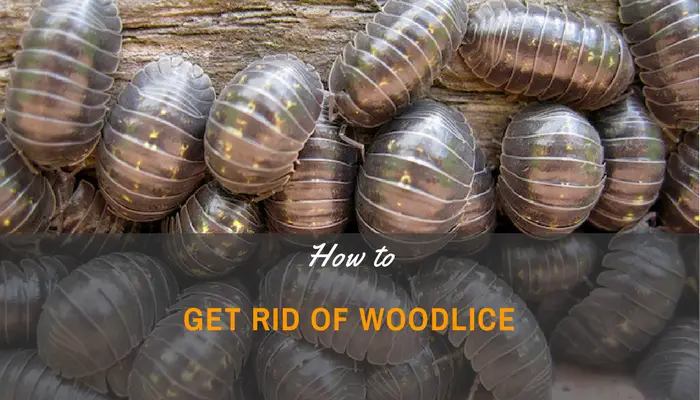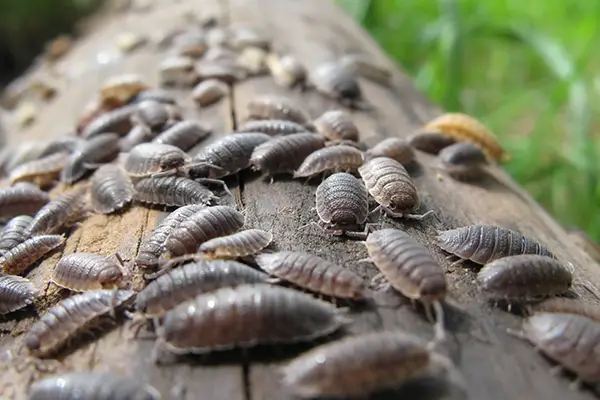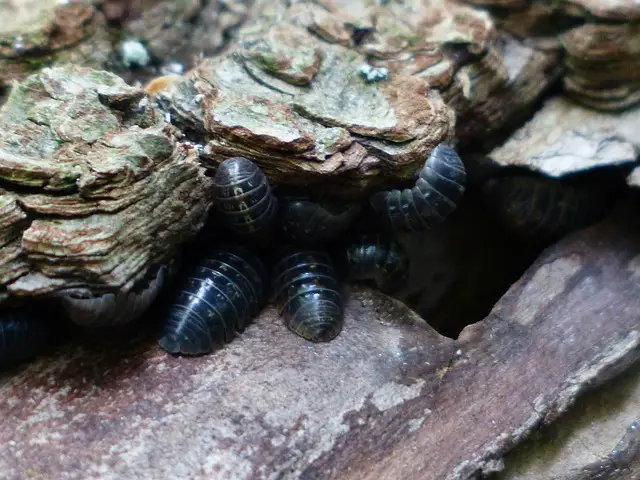A Beginner’s Guide On How To Get Rid Of Woodlice
Natural Solutions to Get Rid of Woodlice in the House - Home Remedies, Easy Infestation, and Pest Control
While a single woodlouse may not cause too much concern, an infestation of woodlice can be an overwhelming problem. Woodlice may not be harmful to a person's health, but they can cause damage to a person's house. There are various methods available to get rid of the pest, some natural remedies and others that use commercial chemicals and can kill them. It is possible to use over-the-counter kits and clear the infestation yourself, but using pest control professionals tends to be the recommended removal option. This article will provide information on how to get rid of woodlice effectively.
What Is A Woodlouse?
A woodlouse is a small pest that belongs to the class of arthropods known as crustaceans. When one thinks of a crustacean, a person will typically think of lobsters or crabs; but the woodlouse belongs in this group of animals as well. The difference between crabs and woodlice is that woodlice no longer live in the ocean.
Oddly enough, despite living in damp wood areas, the woodlouse's skin is not fully waterproof. A person would think that this would make the skin completely dry; however, this is not the case either. Unlike ticks, woodlice are crustaceans and the majority of their species will only survive if their bodies have a film of water covering the skin. If, however, placed in water, the woodlouse will instantly drown.
With a need to remain in damp areas, the woodlouse can be found living in decaying matter making dead leaves in a garden the ideal home for woodlice. Many gardeners will destroy woodlice when finding them by squashing the bug, but this is not necessary and they certainly do not deserve it as they do not cause harm. In fact, many woodlice species have been considered beneficial with medicinal value. In previous centuries, people would swallow woodlouse that were curled into balls whole as a means of treating digestive conditions.
It should also be noted that woodlice can help with decomposition in gardens. A woodlouse can play a pivotal role in the soil ecosystem as its body is a strong source of calcium; therefore, it can assist as a decomposer in the nitrogen cycle.
What Are The Signs Of An Infestation?
Woodlice will typically cause superficial damage to wooden furnishings in a person's home. It is common for a woodlouse to enter homes during the winter months or early spring when seeking protection from the cold; however, woodlice can also infest a home by accident because they seek damp areas and dehydrate in warm environments. This is why woodlice infestations are found in humid areas of the property, such as basements, bathrooms, below kitchen units, in wall crevices, and along roof voids.
What Are The Different Methods Of Removing Woodlice?
1. The Natural Remedies
One of the simplest and most natural techniques to remove woodlice from a home is by brushing the insect into a dust pan, gathering it up, and then disposing of the woodlice outside. You could also consider using a vacuum cleaner and emptying the contents outside in the garden or into a garbage bin. When using a natural method to remove woodlice, it is important that you do not crush the pest on carpets or floors as this animal can easily leave behind a stain.
While it is simple to physically remove the majority of a woodlice infestation, it is recommended that you conduct a preventative measure to ensure the house does not offer them a damp environment for future infestations. You will need to maintain dry conditions both inside and outside the house, and to do this you can use different substances like salt. Pouring salt barriers across doorways can cause the woodlice to dehydrate when entering the home, resulting in their death.
Another natural method to remove woodlice is to bait the pest before discarding them outdoors. Traps can be made from small parcels of cut strawberries, potato, grated cheese, and orange peels wrapped in newspaper. The food parcels must be placed in moist areas and this will attract the insect. Once the woodlice have entered the parcel, you can pick it up and discard it.
If you have the option of using a natural predator to remove woodlice, it is recommended that you opt for the spider - the dysdera crocata. This spider is highly beneficial when protecting the garden and outdoor porch area ensuring that woodlice find the setting 'inhospitable'.
2. The Chemical Methods
While many people prefer to use natural remedies to deal with pest infestations, others choose chemical techniques finding these more effective. Commercial chemical products can also be used on woodlice infestations with great effectiveness and are available in both sprays and dusts. Sprays are easier to use and work more quickly; whereas the chemical dust is only beneficial if the woodlice crawl through it.
Other types of chemical methods include the use of foggers and fumers. The foggers and fumers are useful when woodlice cluster in difficult to reach areas, such as wall crevices or roof voids. These products can remove an infestation quickly with the 'mist' from a fogger infiltrating all the spaces where woodlice are likely to reside.
Despite the effectiveness of all chemical products, it is important to note that commercial chemicals are more hazardous than natural remedies. Sprays are less risky to use if there are children or pets in the home, but they continue to present with toxic ingredients similar to all other chemical removal methods. Non-toxic chemical products are available and you should check the ingredients of the product before making a purchase.
As can be seen, the woodlice are a non-dangerous insect that can be both beneficial to one's garden and dangerous to one's home. Using the information above, you can determine which type of removal method is most suitable for your particular woodlice infestation needs. It is recommended, however, that you should use a preventative measure in addition to the removal method to ensure that the woodlice do not reappear.
Are you looking for a natural and safe way to eradicate woodlice in your home? If so, you have come to the right place! In this blog post, we will be discussing natural ways to successfully remove woodlice (also known as pillbugs) from your home without the use of harsh chemicals. We will share some helpful tips and tricks to remove them naturally, quickly, and effectively. Keep reading to find out more!
Are woodlice harmful?
Woodlice are not considered to be harmful to humans or animals. They do not bite, transmit diseases, or destroy household items. They are beneficial to gardeners because they help to break down plant material and turn it into compost, which helps to improve soil quality. They have also been known to feed on fungus, mold, and decaying wood, further helping to improve garden soil. Despite the fact that woodlice are not harmful, they can still become a nuisance if they become too numerous in a home or garden. In this case, it is best to use natural remedies to control their numbers, such as introducing predators, clearing away detritus, and using insecticides.
Woodlice in the house can be nasty!
Woodlice in the house can be a very unpleasant experience. Woodlice, also known as pill bugs, are small bugs that live in dark, damp places and feed on decaying vegetable matter. They can get into your home through small cracks in the foundation, windows, or doors and can be found in bathrooms, basements, or piles of wet leaves or rotting wood. They can be especially troublesome in humid climates and can cause damage to wood and other materials in your home. To prevent woodlice from entering your home, it's important to seal off any potential entry points and keep the environment dry. If they do get inside, vacuuming them up is the best way to remove them.
What causes woodlice in the house?
The presence of woodlice in the home is usually caused by excessive moisture and humidity. If the environment is too moist and humid, woodlice will move indoors to escape the moisture and humidity outdoors. They feed on organic material inside the home, such as mold, fungi, and decomposing plant material, which explains why they are often found in kitchens and bathrooms. Woodlice are attracted to plants and weeds as well. If you find woodlice in your home, it is important to reduce the humidity or moisture levels by ventilating the area and using a dehumidifier.
How long do woodlice live?
Pillbugs are known for their long lifespans and can live up to two years or more in the wild. They are able to survive in a variety of habitats, from gardens to forests, to urban environments. The majority of their life is spent in dark, damp places that provide protection from the elements and predators. They feed on decomposing organic matter and can reproduce rapidly. They are also quite resilient, boasting the ability to survive changes in temperature and moisture levels. Therefore, with proper conditions, They can live up to two years or more.
How can you prevent woodlice from entering your home?
The best way to prevent woodlice from entering your home is to make sure that your property is well-sealed. This includes sealing any cracks around doors, windows, and other openings. Additionally, sealing any gaps around pipes and wires that lead into the home is also essential. Furthermore, make sure to check any firewood you bring inside for pillbugs and other insects. Finally, if you have a basement or crawlspace, make sure to keep it dry and well-ventilated to avoid moisture buildup which can attract pillbugs.
How to prevent a woodlice infestation
Preventing a pillbug swarm requires a few simple steps. First, inspect the home for areas of moisture, such as damp basements, leaky pipes, or high humidity levels. If any of these areas are present, repair them immediately. Next, seal any potential entry points for pillbugs, such as cracks in walls and crevices around windows and door frames. Finally, reduce clutter and debris, such as stacks of old newspapers and firewood, to discourage pillbugs from entering the home. Additionally, it is important to regularly clean and vacuum any areas of the home prone to pillbug attacks, such as basements, pantries, and closets.
How do you deal with a woodlice infestation?
To deal with a pillbug attack, the first step is to inspect the home for any areas where pillbugs might be hiding. This could include checking for any damp areas, such as near pipes, drains, and other wet areas in the home. If pillbugs are found, it is important to eliminate any moisture sources in order to reduce the likelihood of an attack. Additionally, it is important to keep the home clean and vacuum any pillbugs that are found, as well as any other debris they may have brought into the home. Sealing any cracks or crevices in the walls or floors where pillbugs may be hiding is also important. Finally, if the attack persists, it is important to contact a professional insect control service to ensure that the pillbugs are eliminated and the house is kept safe and insect-free.
How to kill visible woodlice - The best woodlice killers
The best way to kill visible pillbugs is to use a vacuum cleaner. Vacuuming up the pillbugs is an effective way to remove them because it minimizes the chance of them escaping and hiding in other parts of your home. Alternatively, you could use an insecticide such as a pyrethrin-based dust or aerosol spray. These products should be applied directly to the pillbugs and any areas they have been active in. Additionally, you can reduce pillbugs populations by eliminating sources of moisture and humidity in and around the home, such as leaky pipes or drains. Finally, you can reduce pillbug populations by sealing any cracks or crevices around the home that may provide access points.
How to eradicate woodlice in your home without using chemicals- Get Rid of a woodlice infestation
Start by making sure your home is clean and free of clutter. Vacuum up any pillbugs you see and dispose of the vacuum bag right away. Then, fill any cracks and holes in the wall, floors, and ceilings, as pillbugs often hide in these areas. Next, try using natural solutions like diatomaceous earth and borax powder, which can be found in most stores. Sprinkle these powders around your home, paying close attention to the areas where pillbugs are known to hide. Finally, use a dehumidifier in your home to reduce moisture, as pillbugs thrive in humid environments.
Fumers and foggers can eradicate an infestation swiftly
Fumers and foggers are a great way to quickly and effectively eradicating an influx. Fumers and foggers work by releasing a chemical that quickly kills the insects and their eggs. The fumes or fog created by the chemical fill the air and kill the insects as they come in contact with them. This method is fast and effective and can be used in a variety of spaces. It is essential to follow the instructions provided with the product to ensure safety and effectiveness. Fumers and foggers can be a great option for eradicating a pillbug attack quickly.
What do woodlice eat?
These crustaceans are omnivorous pests, meaning they can eat both plants and animals. Plants make up the majority of their diet, and they usually eat dead and decaying vegetation, such as leaves, bark, and wood. They also eat fungi, algae, and other small organisms. Some pillbug species will even eat other pillbugs. They are also known to eat small insects and earthworms.
How to get rid of woodlice using pest control
Start by identifying the areas where these pests are present. Vacuum those areas to eradicate the adults and eggs. Seal the cracks and crevices in the walls and floors to prevent them from entering the house. Use a pesticide, such as boric acid, to treat pillbug influx. Apply the pesticide in the areas where the pillbugs are present. Ensure that you are using the pesticide according to the instructions and safety precautions on the label. You may also use natural insect control methods, such as diatomaceous earth, to get similar results
Home remedies for wood lice: what really helps?
Some of the most effective home remedies for pillbugs include vacuuming regularly to remove the lice, sprinkling borax powder around the infested areas, and spraying the area with a mixture of vinegar and water. Another popular home remedy is to create a paste from vinegar and baking soda and apply it to the infected areas. This mixture can be left on for a few hours and then wiped away. Finally, you can also place bay leaves around the infested area to act as a repellent for pillbugs.
How to stop woodlice entering your bathroom?
To prevent woodlice from entering your bathroom, you should take proactive steps to seal off any potential entry points. Start by sealing any cracks or gaps around windows and doors. If there are any vents or other openings that lead outside, place a fine mesh screen over them to block woodlice from entering. Additionally, make sure the window and door seals are in good condition so that they create a tight seal. Finally, make sure to regularly clean away dirt and debris from window frames and doorways, as this can attract woodlice.
Call a pest control company
Calling an insect control company is one of the best and most effective ways to tackle woodlice issues in the house. They will be able to identify the type of woodlouse in your house and provide you with the appropriate treatment. The company will use chemical or non-chemical solutions that are specifically designed to target woodlice, ensuring that they are quickly and safely eliminated. Furthermore, the insect control company will be able to provide you with helpful advice on preventing woodlice from returning in the future.
Conclusion
When it comes to removing woodlice in the house, natural solutions are often the most effective. By removing any damp or humid conditions, keeping your home clean, and making use of natural deterrents such as diatomaceous earth, you can safely and effectively remove woodlice from your home. While woodlice may sometimes be a nuisance, by taking the right steps and using natural solutions, you can eradicate of these insects and keep them from coming back.





